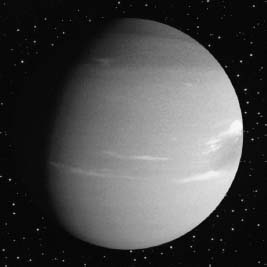Math in the Physical SciencesAstronomy and Math |
How does geometry work in terms of eclipses of the Sun and Moon? |
Eclipses of the Sun (called a solar eclipse, when the Moon is between the Earth and the Sun) and the Moon (called a lunar eclipse, when the Earth is between the Moon and the Sun) are all a matter of angles. For example, in a solar eclipse, the shadow of the Moon follows a narrow path on the Earth, creating a shadow only in certain regions—not the entire planet (the Moon isn’t large enough to create a shadow that would cover the Earth). Depending on the angle and distance of the Moon from the Earth in its orbit, a solar eclipse can be an annular (the apparent size of the Moon is insufficient to cover the Sun completely, creating a ring of sunlight around the Moon); partial (the Moon only covers part of the Sun as seen from the Earth); or total (the Moon blocks out the entire face of the Sun in the eclipse path).

Neptune is the only planet in our solar system that does not fit the model set by the Titius-Bode Law.
